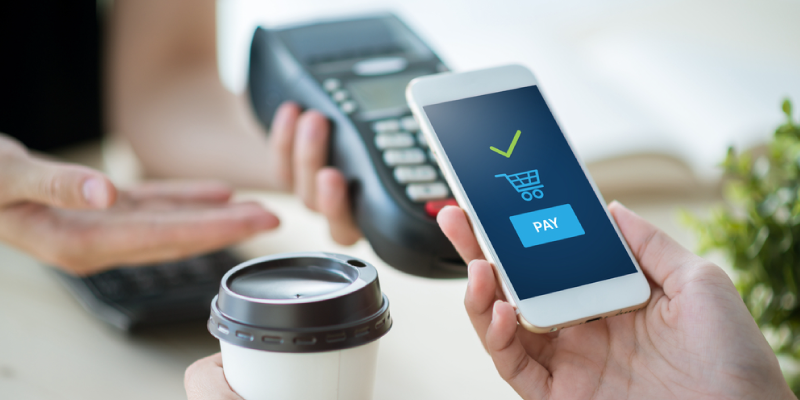How To Improve Your Mobile Payment Experience

It is no secret that Indians have genuinely embraced the changes brought about by mobile phones. Phones have become almost an indispensable part of our lives that allow performing a range of activities from handling work, socializing, and even making payments. The smartphone revolution has gripped India, changing the payment landscape with online payment taking centre stage. There were 744 million users in India who accessed the internet through mobile phones in 2020. Most people prefer browsing through e-commerce websites on their smartphones because it is handy and portable. It enables people to shop on the go, and they can access it at any time when they are free. Moreover, the number of mobile users is much more than the number of laptop or desktop users. This makes it important for businesses to have a payment collection system that works flawlessly in the mobile application.
Importance of improving the mobile payment experience
The latest statistics suggest that retail eCommerce sales via mobile phones were 65.3% in 2016. The numbers have increased manifolds over the past few years. One can find people using mobile devices almost everywhere. Most people who are sitting idle can be seen scrolling their phones. If the customers can immediately place an order right from their phones while they are browsing, it is likely to lead to high sales. If the mobile application lacks placing an order, the customer would have to save the product information and order it from a separate device later on. Even after saving, they might forget about it later and abandon the idea of making a purchase.
The screen size of the mobile device is another point of consideration for businesses. There are several handheld devices with varying screen sizes. The customer could be using either of them. The application and the payment system have to seamlessly work with all the screen sizes and provide a consistent experience to the customers. Providing a seamless experience on mobile applications can lead to higher conversion rates. Most payment gateways in India give a facility to integrate the gateway into mobile applications as well.
Ways to improve the mobile payment experience
- Choose a Suitable Payment Gateway
Users on mobile devices prefer browsing the catalog of any business in its native application rather than on a website. This consumer behavior has led all major companies to create their applications for different mobile phones. It is equally essential for businesses to choose a payment collection system compatible with the application platform. For example, Payment gateway service Zaakpay offers a simple way to integrate itself into any Android application. It gives developer tools like Software Development Kit (SDK), making it easy for the application developers to integrate the gateway into the application.
- Offer Multiple Payment Options
The number of payment options available for digital transactions is enormous. Having a gateway that supports most of them will increase sales by broadening the consumer base to make purchases. However, when on the mobile phone, the payment gateway must support the mobile-centric payment options. These options make the payment process easier and more suitable for small mobile screens with limited typing capabilities. For example, making a UPI payment requires only a few taps on the screen, that too, on properly labeled icons.
On the other hand, a credit card payment requires the customer to type in the card details and then make the payment. Similarly, mobile wallets like Mobikwik are also easy mobile payment options. Most payment gateways in India support such mobile wallets.
- Offering extensive security
Security is significant while making digital payments. The payment gateways handle sensitive information of the customers, like their credit card numbers or OTPs. Providing unbreachable protection, especially on mobile devices, is imperative for businesses. Mobile devices are more vulnerable to data theft or loss, which makes securing the credentials more critical. If card details are being saved in the application for quicker payments in the future, there should be application passwords that make it difficult to exploit the protected information. Opting for a PCI DSS compliant payment gateway is crucial as it encrypts the user data and is secure against potential cyber fraud.
- Using Better Design Language
While designing the checkout page, it must be remembered that the screen size of a mobile device is much smaller compared to other devices. This means that the amount of information displayed on the screen at any time will be less. All relevant information must be put using concise and straightforward texts that stand out from the rest. Icons can be used to direct the user to the next step. At the same time, the process should not belong and avoid scroll bars as much as possible. A complicated process can make the customer abandon the purchase. Streamlining the checkout process also encourages impulse buying.
- Guest Checkout
If the payment collection process forces the user to create an account, the user might end up abandoning the whole process. The aim is to make the process of purchasing as simple as possible. It is best to keep registration an optional activity. The option to log in directly through the linked Google account is another noticeable feature.
Conclusion
Diversifying the offerings across multiple devices is a great business tactic that enables the merchants more customers. Mobile applications are a new but powerful arena for businesses to expand into. Most payment gateways in India support mobile applications. Zaakpay, among them, is a feature-rich yet affordable payment gateway service that caters to the needs of small and big businesses. It accepts all major payment modes and offers 24/7 customer support to the merchant and the customers of the merchant.


